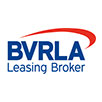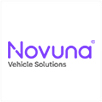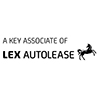Probably, there has been no time in the history of the car when it has been more complex to operate a fleet.
There are multiple reasons for this – but a dysfunctional UK government caught up in the WLTP emissions transition (Worldwide Harmonised Light Vehicle Test Procedure) has resulted in a challenging tax environment compounded by lack of foresight on future taxation rates, while the diesel supplement on company cars rose to 4% earlier this year, driving up bills and total government tax take.
Last year, over 30,000 people left company car schemes, many of them moving to cash allowances.
The problem is, many of them then became a ‘retail’ customer for their new car, negating the purchasing power of their company and forced to purchase or lease their car from an anonymous leasing website, or the out-dated dealership model with retail discounts as opposed to utilising the fleet buying company their business commands.
From an employer point of view, moving to a cash allowance system, or more simply increased salary to replace the company car benefit in kind, makes sense.
Firstly, businesses are increasingly shying away from the increasing administration of running a fleet. This has been coupled with uncertainty around the governments tax positions on diesel/petrol/hybrid or electric cars, exacerbated by the recent drop in electric vehicle grants at a time when the government is supposed to be committed to ‘Project Zero’
The business-as-usual four-year-lease/fleet scenario, is a riddled with uncertainty right now. In a worst-case scenario, a business that has a fleet of sub-75g/km CO2-emitting Toyota Priuses, with 15-inch tyres, would have purchased or leased them emitting 70g/km CO2. WLTP testing pushes that to 78g/km, taking them above the threshold for a 100% write-down allowance, while a four year lease taken out on that vehicle in 2018 could be very painful in two years, depending what the government decides on benefit in kind employee tax charges.
Lots of other vehicles that are already above the 75g threshold are going up one, two or three Benefit in Kind bands as a result of WLTP.
It is important not to take any transition to cash allowance style model lightly. If a member of staff is using their personal car for business, does the vehicle meet health and safety standards, is it being properly looked after, does it meet company standards for emissions and fuel economy?
Is it fit for purpose for what it does and how it projects the company image wherever it goes?
The employee is suddenly responsible for the tyres, the warranty, the GAP insurance, business insurance and the MOT if there is one.
The employer has potentially removed the control, but crucially, not the responsibility for that vehicle and that driver, when on business use.
The summary position is that what suits one employer or one employee, might not suit another. Companies need to consider their needs, not forgetting their duty of care and the due diligence required to know for sure, for example, that the individual employee has ticked the ‘business use’ box on their insurance policy.
Cash allowances are suited to this uncertain context, but the details need to be thought through by employers, with the help of expert advice.
Pike + Bambridge launched their award-winning cash allowance software in 2018, and specialise in setting up schemes for businesses allowing employees to access our personal, hassle-removal service, as well as using the business group buying power for their personal cars. If you would like to find out more, please contact the Cash Allowance Alliance team at sales@pikeandbambridge.co.uk or 0131 5637493.








